The "Lewek Kea" and her sister ship "Lewek Kestrel" are typical examples for modern anchor handling tugs. Operated by EMAS Offshore Limited, they are used for a variety of tasks, such as anchor handling, towage, safety services, seismic exploration and emergency services. Both vessels are therefore equipped with a variety of winches and emergency equipment.
This kind of vessel is a common representative of the most important workhorse of the offshore industry around the world.
Scale 1:200
Length 24 cm
Width 6.5 cm
RC functions the model is prepared for
Other scales: 1:288, 1:350
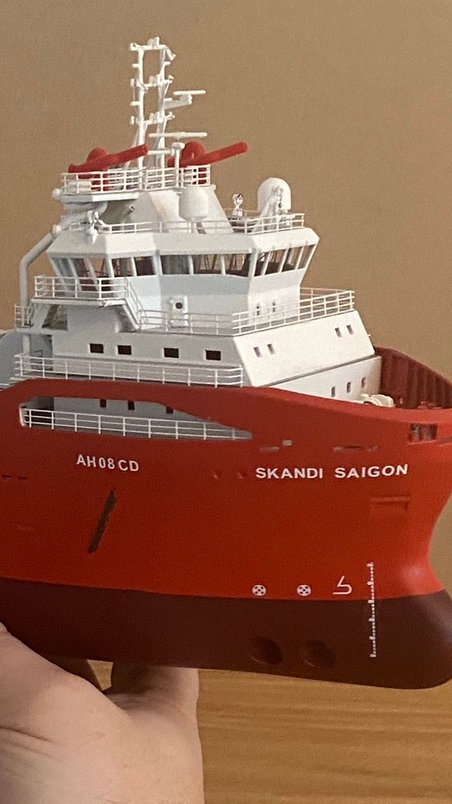
Skandi Saigon
Anchor Handling Tug / Supply Vessel
The "Skandi Emerald" and her sister ships (Skandi Atlantic, Skandi Pacific and Skandi Saigon) are typical large modern anchor handling and supply tugs. Operated by DOF Group, they are used for a variety of tasks, such as anchor handling, towage, safety services, and to supply offshore operations. The vessels are therefore equipped with a variety of winches and emergency equipment, such as several winches, storage areas and a large open deck space for various kinds of operations.
Scale 1:200
Length 37.5 cm
Width 8.7 cm
RC functions the model is prepared for
Granit
Anchor Handling Tug / UT704
The "Granit" is an anchor handling vessel used in offshore and supply operations, based on the very common UT 704 design. Currently operated by Lotos Petrobaltic (the same company that discovered the wreck of the lost German aircraft carrier "Graf Zeppelin" in 2006), the vessel was built in Poland in 1980. The ship operates largely in the Baltic Sea.
.
Scale 1:200
Length 32 cm
Width 7.2 cm
RC functions the model is prepared for
Other scales: 1:350
Powhatan Class US Navy Tug
The seven Powhatan Class tugs were built and operated by the Military Sealift Command of the US navy since the late 1970‘ies for all kinds of fleet ocean tug duties. In 2014, four were still active with the US navy. Each vessel are used to tow vessels, barges, and gun exercise targets, and they are used for salvage and rescue operations. With their twin diesel engines, they have a bollard pull of approximately 54 tons. Additional equipment includes a ten ton crane, a dinghy and firefighting equipment.
Scale 1:200
Length 36.5 cm
Width 7.5 cm
RC functions the model is prepared for
Other scales: 1:144
Offshore supply vessel / Minesweeper
The Anticosti, originally "Jean Tide”, was built as an oil rig supply vessel and later converted by the Canadian Navy to serve as a minesweeper (HMCS Anticosti (MSA 110)). Her sister ship, "Joyce Tide”, was converted to the minesweeper "HMCS Moresby" (MSA 112). With the introduction of the Kingston-class patrol vessels, both ships were retired from active service and later sold to be used again as supply vessels. The Anticosti still is in active service today. Driven by four diesel engines, she employs a total of 4,600 horsepower. In addition, she uses a GillJet thruster to aid maneuverability (also referred as azimuth bow thruster or pump jet).
Scale 1:200
Length 29 cm
Width 6.5 cm
RC functions the model is prepared for

Serie Nordstern
The coastal transport vessels of the type „Kümo 840“, also known as „Serie Nordstern“, were built by the German Democratic Republic in the years 1960 until 1963. In total, 25 units were built, which were mostly used for coastal transport tasks in the Baltic Sea and the Mediterranean. The ships were able to carry 840 tons and had two cranes with a lift capacity of 3 tons each.
Scale 1:200
Length 29 cm
Width 5.1 cm
RC functions the model is prepared for
Other scales: 1:160
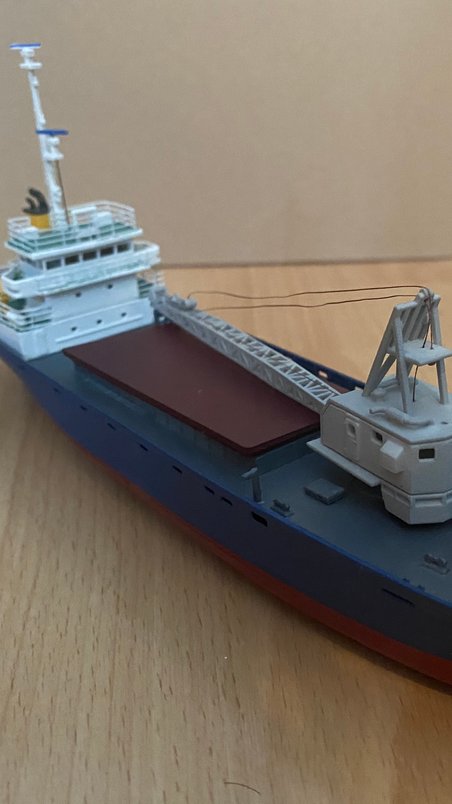
The vessel "Sinekura 2" is a typical multi-purpose coastal transport vessel with high versatility even under difficult conditions. She is operated by Onego Shipping in Russia. The fact that she is equipped with a 25 ton crane makes her somewhat unique. She was built 1988 in Japan. During the first part of her life, she was operated under the name “”Myoho Maru”, she is registered as IMO 8805884.
Scale 1:200
Length 25 cm
Width 6 cm
RC functions the model is prepared for
Holstentor
NVG 6 was built in 1966 as one of the first supply vessels to support the offshore activities in the North Sea, and it was run by DDG Hansa. Many of the following supply vessels were derived from this design. After 1967, the vessel was named „Holstentor“, and while it was sold later, it was operated until 2012, last as „Marive III".
Scale 1:200
Length 26 cm
Width 6 cm
RC functions the model is prepared for
Other scales: 1:100, 1:350
The Kingston class vessels serve multiple roles, both in mine sweeping services, coastal patrol and training. They have a complement of approx. 35 staff on board, and can be equipped for the different purposes using a modular system of different 20 ft. ISO containers that can be stowed on the rear deck. Seven different mission-specific modules are available. The ships use diesel-electric Z-drives with azimuth pods that can be rotated by 360°, giving them exceptional maneuverability. They are armed with a 40mm gun and two 12.7mm machine guns.
Scale 1:200
Length 27.7 cm
Width 4.7 cm
RC functions the model is prepared for
Other scales: 1:96, 1:160, 1:350
The auxiliaries A61 Rmah and A62 Alfaq were built as multi-purpose vessels / auxiliaries fort he United Arab Emirates. They are designed as RoRo ships (roll on, roll off), but can also be used as minelayers and for other supply tasks. Some sources on the web also suspect a possible ASW (anti submarine warfare) duty that, however, has not been confirmed. Both were built by Nobiskrug shipyard in Germany in 2013.
Scale 1:200
Length 29 cm
Width 5.5 cm
RC functions the model is prepared for
Futhermore, the ramp, the crane and the radar can be made to work, but not all parts are included.
Other scales: 1:350
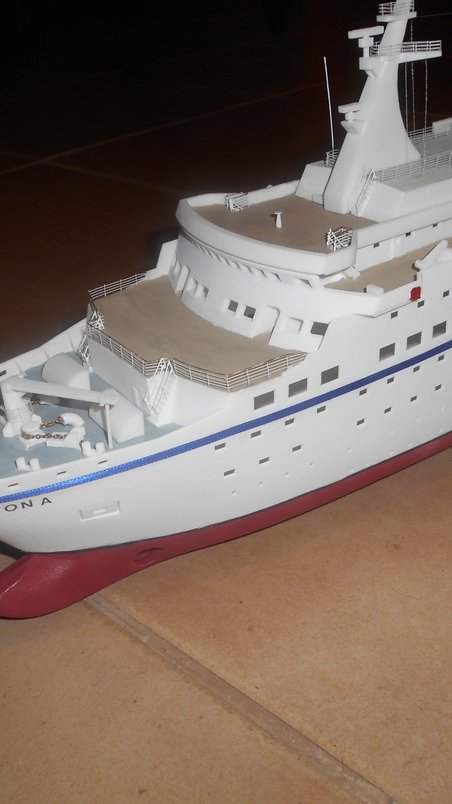
The MS Arkona was originally built as the MS Astor in 1981 and renamed MS Arkona in 1985. It is most well-known for its appearance in the German TV Series "Traumschiff" (in 1983/84) and the DFF TV series "Luv und Lee" (in 1990). She sailed from 1985 onwards under a GDR flag until in 1990. In 2002, she was renamed MS Astoria and later sold again, being renamed Quest for Glory and then Saga Pearl II. As a cruise ship, she could accommodate about 600 passengers, employing a crew of 220 staff. Being much smaller than other cruise ships today, Saga Cruises therefore today promotes it as more of a “yacht like” experience to take a cruise on this ship.
Scale 1:400
Length 41.1 cm
Width 6.3 cm
RC functions the model is prepared for
Other scales: 1:200
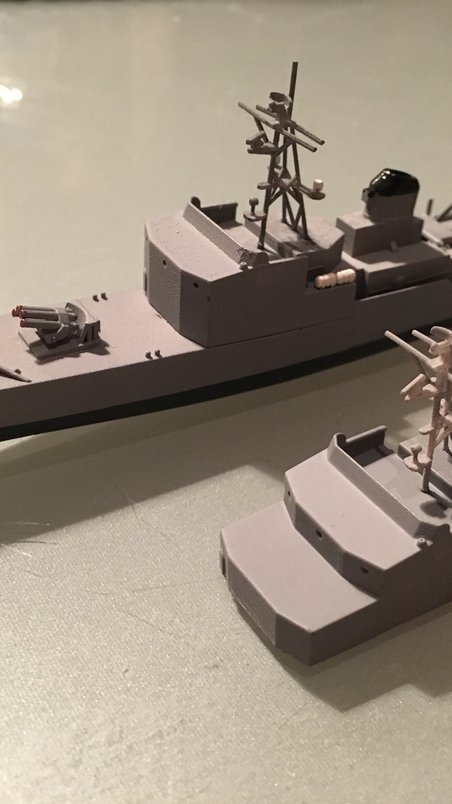
The five units of the Thetis class were originally designed in the early 1960ies as submarine hunters and went through different design stages; the most well-known unit is possibly the "Najade", which had a characteristic superstructure to accommodate a hospital section ahead of the main superstructure. In the German Navy, they were mostly used for anti-submarine duties, for which they were armed with two to four torpedo tubes, an anti-submarine launcher and a 40mm anti-aircraft gun. They also used various mines and depth charges. All units were transferred to the Hellenic Navy of Greece in the early 1990ies , and were kept in service until early this century as gunboats, which were equipped with a second 40mm gun instead of the anti-submarine launcher.
Scale 1:200
Length 35 cm
Width 4.1 cm
RC functions the model is prepared for
Other scales: 1:100, 1:285, 1:350
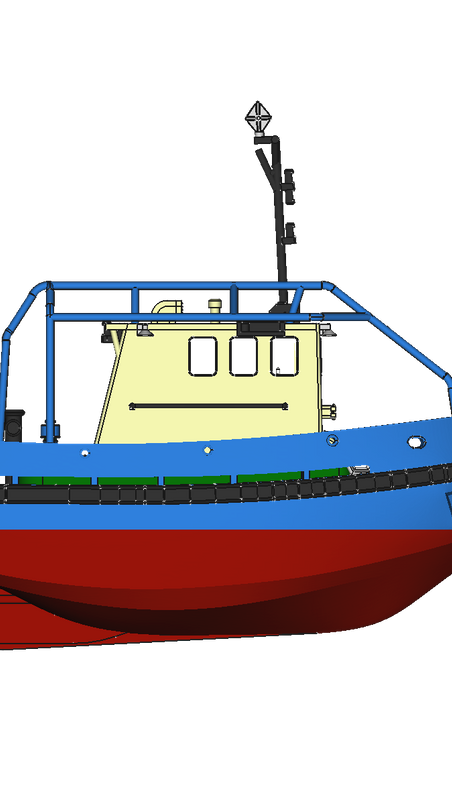
The "Emilka" was the prototype of a series of small tug boats. Today, she is still in use in Gdansk Harbor, and she has several derived military sister ships that were built after this initial design, all with slight improvements (M-12, M-21, M-22 and M-35) and one civilian sister ship that is still in use ("Nogat", originally M-45, also sightly varying from the original design). One further vessel (M-36) saw its use in the Polish coast guard for a while. The model of the Navy tug M22 is available through Micro Boat Hobby, too. The vessel was set up to carry seven passengers or up to 2.5 tons of cargo. The derived versions later make no more use of the "cage" that the original boat was equipped with.
Scale 1:87
Length 12.4 cm
Width 4.5 cm
RC functions the model is prepared for
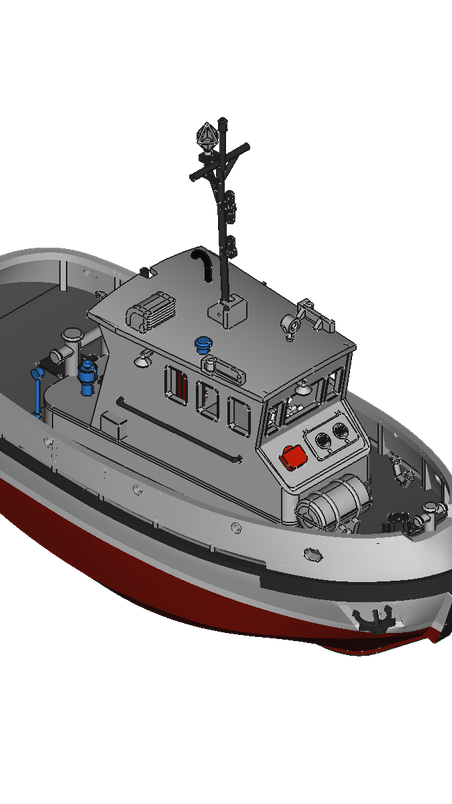
The "M22" is one of several small tug boats employed by the Polish Navy to support harbor and mooring activities, such as the quayside positioning of larger vessels when mooring. The M22 and its sister units M12, M21 and M35 are built based on the design of the mooring tug "Emilka", which still serves as a mooring tug in Gdynia / Gdansk and is also available as a model here. There is also one other civilian sister ship that is still in use ("Nogat", originally M-45). One further vessel (M-36) saw its use in the Polish coast guard for a while. The vessel was set up to carry seven passengers or up to 2.5 tons of cargo. The derived military versions make no more use of the "cage" that the original boat was equipped with, and their state of equipment and painting has varied over the years.
Scale 1:87
Length 12.4 cm
Width 4.5 cm
RC functions the model is prepared for